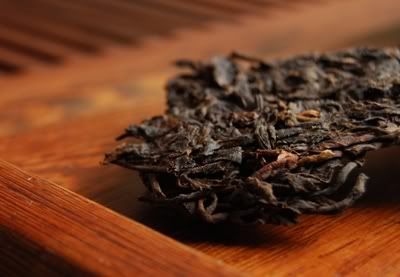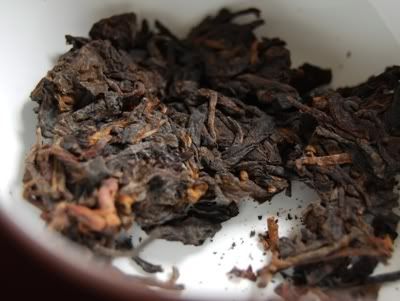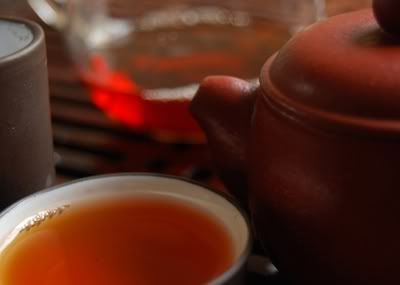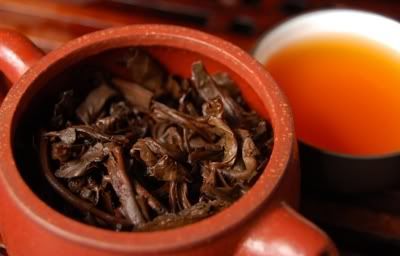In 1986, I was just leaving lower school. I remember a love of playing marbles, collecting Star Wars action figures with my friends, being terrified at the prospect of attending a school filled with Big People, and truly despising tea. I don't get quite so much time with the marbles or action figures these days, and that school now looks rather small and sweet, but my attitude to tea has changed somewhat. While that freckle-faced young boy was facing his new school, this tea was being picked, steamed, and pressed. The timescale of tea can be very sobering.
Very many thanks to ST for sending this excellent tea all the way from Singapore. (More pretty stamps for my wife, too!)
Very many thanks to ST for sending this excellent tea all the way from Singapore. (More pretty stamps for my wife, too!)
As is common with teas of the old school, the leaves are very small. They have already passed rusty orange, and are descending into the reassuring colour of dark chocolate (shown above, and below). They have a sharp shicang [wet storehouse] aroma, but nothing too recent - this one has been aired for some time. Comme ci, comme ca - I am neither greatly enamoured nor violently opposed to shicang characteristics.
The wenxiangbei [aroma cup] is all sweetness, with great duration. While shicang, it is clean and distinct. The colour of the soup is a highly desirable orange-red.
The first sensation is its immediate flavour, a charming and unique character: sweet cedarwood, with a broad, root-vegetable base that reminds me of sweet potato. In the nose, a similarly vegetable-like aroma. What a curiousity this is.
The huigan pauses before making itself felt, but then resounds in the throat for many minutes. Drinking slowly, this tea is a long event.
The huigan pauses before making itself felt, but then resounds in the throat for many minutes. Drinking slowly, this tea is a long event.
I have used our hanwa [Han dynasty-style ceramic] little 7cl pot, which treats old leaves very well. Its small size requires repeated filling, but more than compensates for our efforts with the joy it brings.
Even creamy vanilla notes develop in later stages of this tea, while a gentle chaqi rumbles on regardless of time or potency.
Thanks again to ST for a fine experience. I have no doubt that the young boy mentioned at the start of this article would have found this tea utterly repugnant, but he turned out OK in the end...





9 comments:
Vanilla and Cedar, the tea sounds heavenly!
Dear Bill,
I think you'd like this one. I dread to think how much a 1986 CNNP would cost, though! I don't know if I could enjoy a tea on which I'd spent so much money... which makes me ever more appreciative to ST for the generous sample. :)
Toodlepip,
Hobbes
Looks pretty...
Not sure about root vegetables myself, but well, if it has vanilla :p
-vl.
It is a pretty one, there's plenty to look at with it, yes indeed. That "root vegetable" aspect - it's the low, almost grainy-sour undercurrent. You know the one. :)
Toodlepip,
Hobbes
Had some lovely black tea in Mayanmar. It looked like little lumps of coal with just a slight powder of frost. I tasted like a dream of black tea. Even the after taste was marvelous.
Dear Richard,
It sounds good, the description sounds a little like "tea nuggets" (Cha Tou) - very mellow and smooth.
There are stranger teas in heaven and upon earth, Horatio, than dreamt of in our philosophy. :)
Toodlepip,
Hobbes
ELECTRIFYING!!!
beautiful photos!
Thank'ee :)
Post a Comment